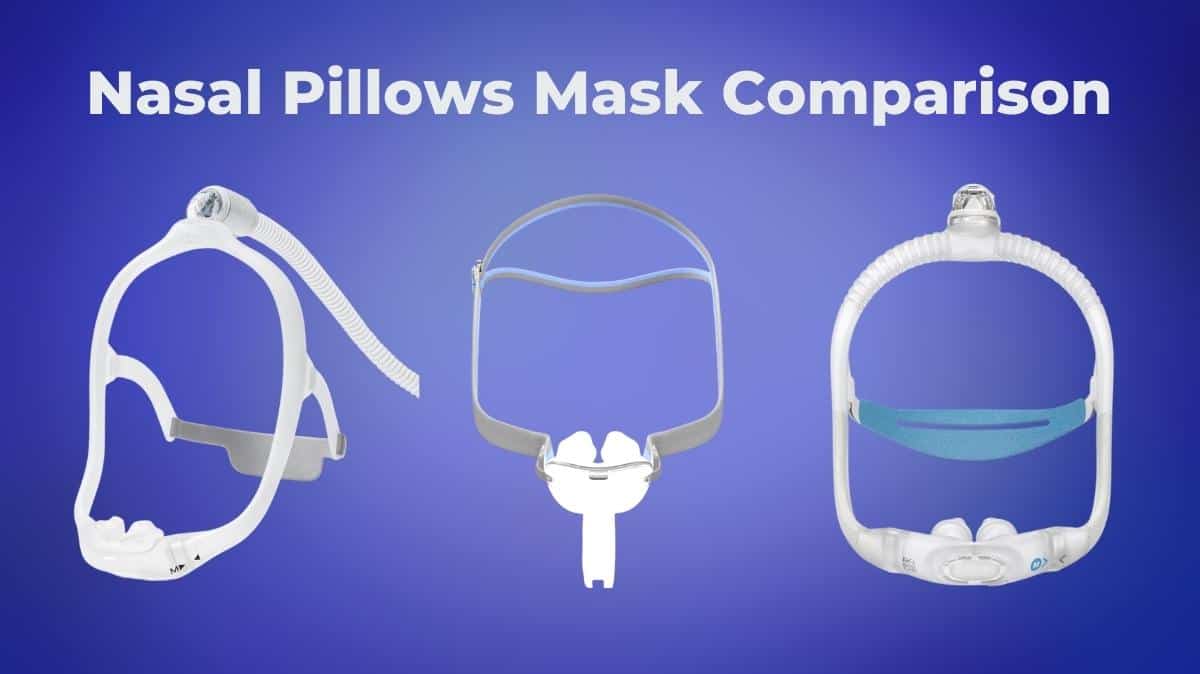By Lily, Registered Respiratory Therapist
If you’ve settled on nasal pillows as your type of CPAP mask, then the Philips Respironics DreamWear Silicone, the ResMed P10, and the P30i are indeed the top three masks you should consider choosing from. In this short guide, we’ll help you make that choice.
Philips Respironics DreamWear Silicone Nasal Pillows CPAP Mask (New – 2021)
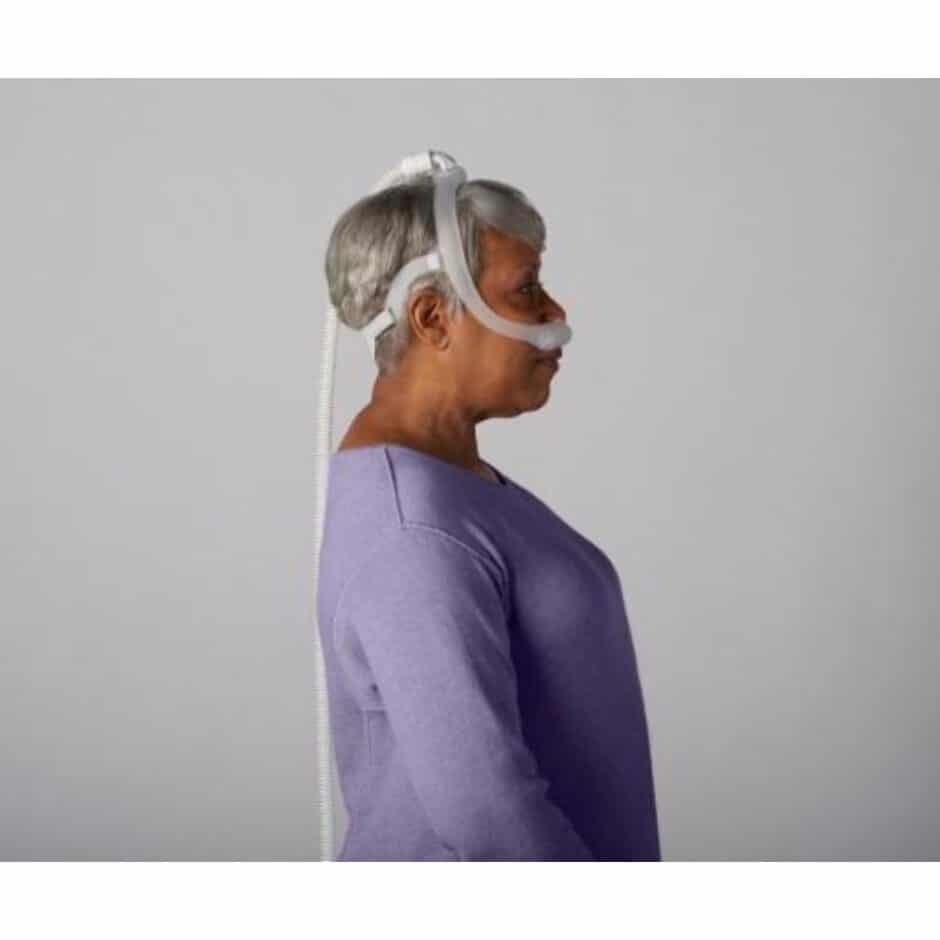
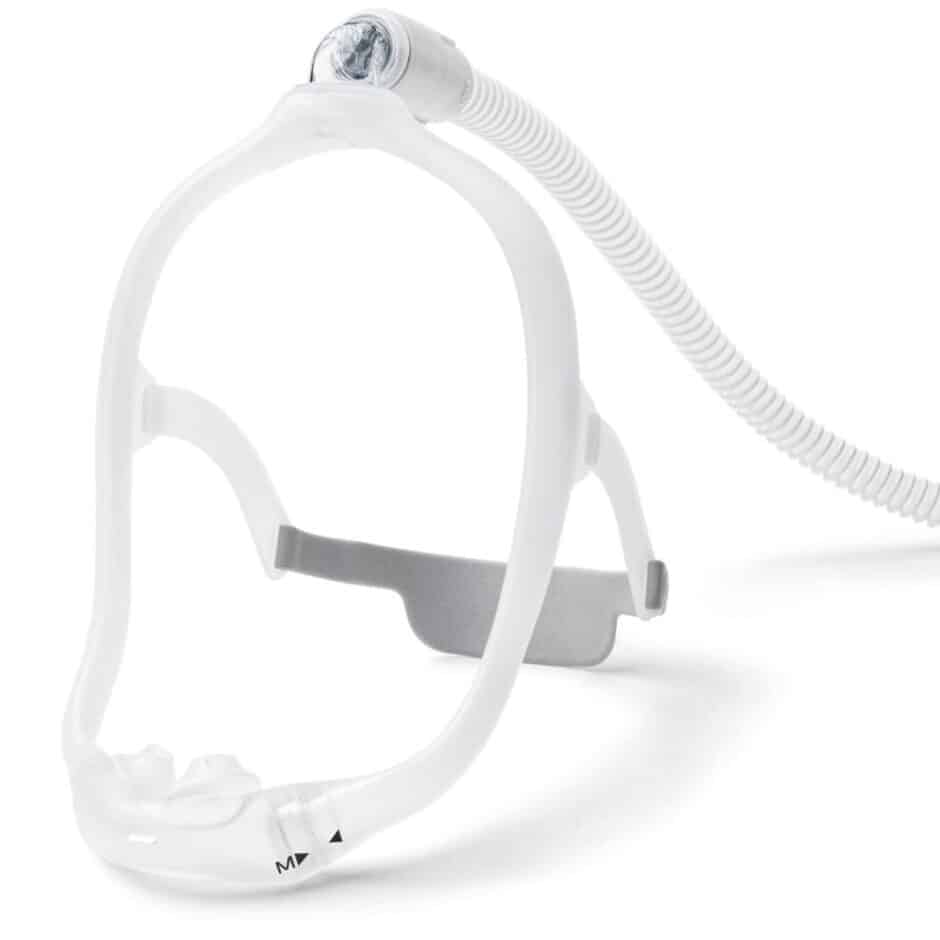
CPAP users spoke, and Philips listened and updated one of its most popular CPAP masks, the DreamWear Gel Nasal Pillows. The new 2021 Silicone version no longer uses gel pillows, opting for silicone instead. The new, silicone nasal pillows are gentler, sit better in the nostrils, and shift less during sleep.
One aspect of the gel pillows people spoke about was the sizing. For some, the pillows were either a little too large or too small. So, Philips Respironics came up with the MW size for the pillows (not the mask itself). So, now it is easier than ever to get a perfect fit.
A pair of plastic arms connected to a back-of-the-head headband has replaced the one-piece headband. The result is more comfort and better stability during the night, even if you tend to move around quite a bit during sleep.
And, of course, you get the light, top-of-head connection design that enables you to sleep in virtually any position without compromising your CPAP therapy.
Key Features:
- Top-of-head connection with quick-release elbow
- Flexible, soft silicone frame available in S/M/L
- Eyeglass-style headgear with plastic arms
- Silicone nasal pillows available in S/M/MW/L
- FitPack available: M frame with all 4 nasal pillow sizes. The M frame comfortably fits most adult men and women of average build.
ResMed AirFit P10 Nasal Pillow CPAP Mask
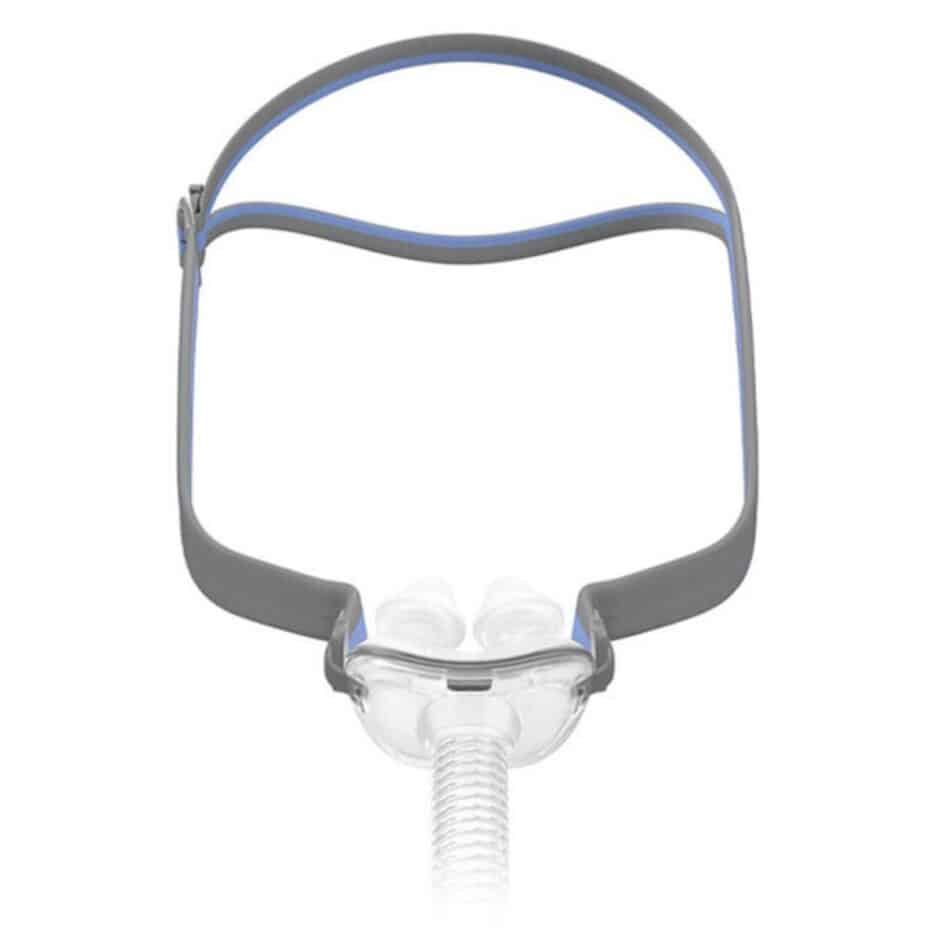
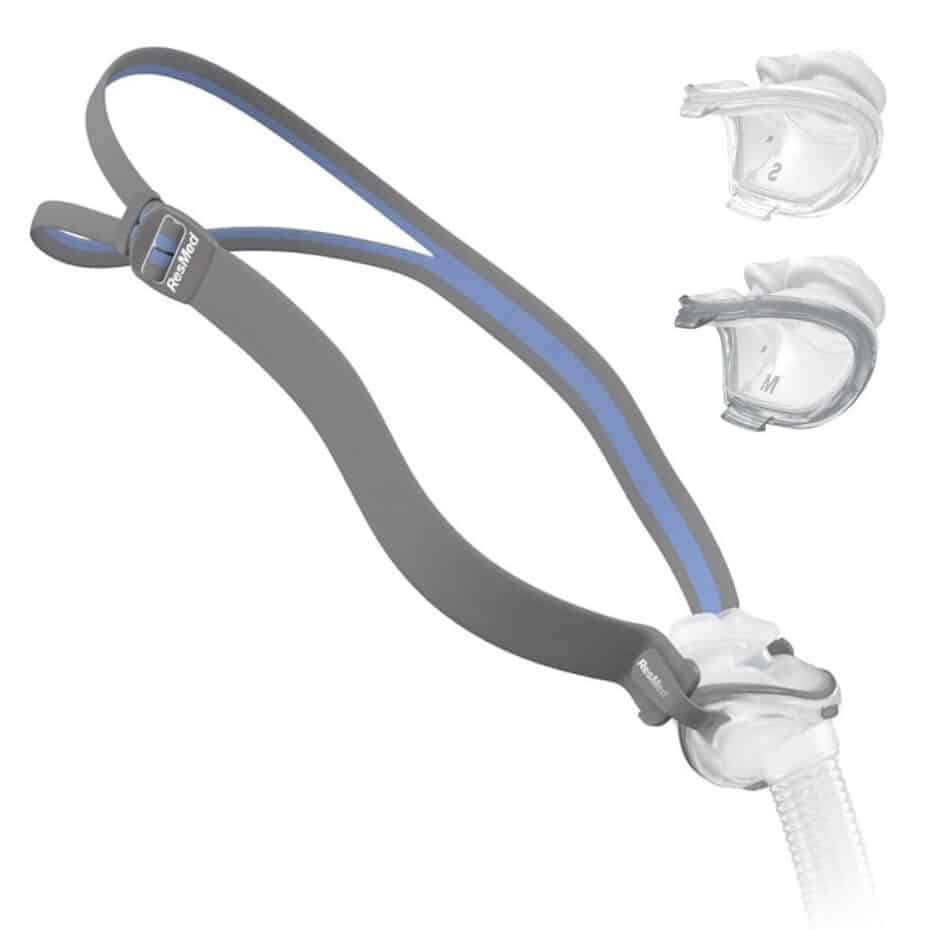
Incredibly small and lightweight (at less than 1.6 oz), the ResMed AirFit P10 is a nasal pillow mask with minimal headgear and only three pieces to assemble. In fact, it is one of the lightest CPAP masks on the market, second only to the AirFit N30 (which is a nasal mask) by less than a gram 🙂
The P10 is great for first-time CPAP users, especially for those who are claustrophobic, thanks to its minimalistic and feather-light design. Independent studies conducted by ResMed showed that users of this mask slept about 40 minutes longer per night.
Key Features:
- Minimal headgear – one strap to slide over your head, and it sits on the back of your head
- Silicone nasal pillows available in S/M/L
- Women’s version available – P10 For Her comes with a slightly shorter/smaller headgear and XS/S/M silicone nasal pillows
- Ultra quiet – the QuietAir woven mesh vent directs air away from you and your bed partner.
ResMed AirFit P30i Nasal Pillow CPAP Mask
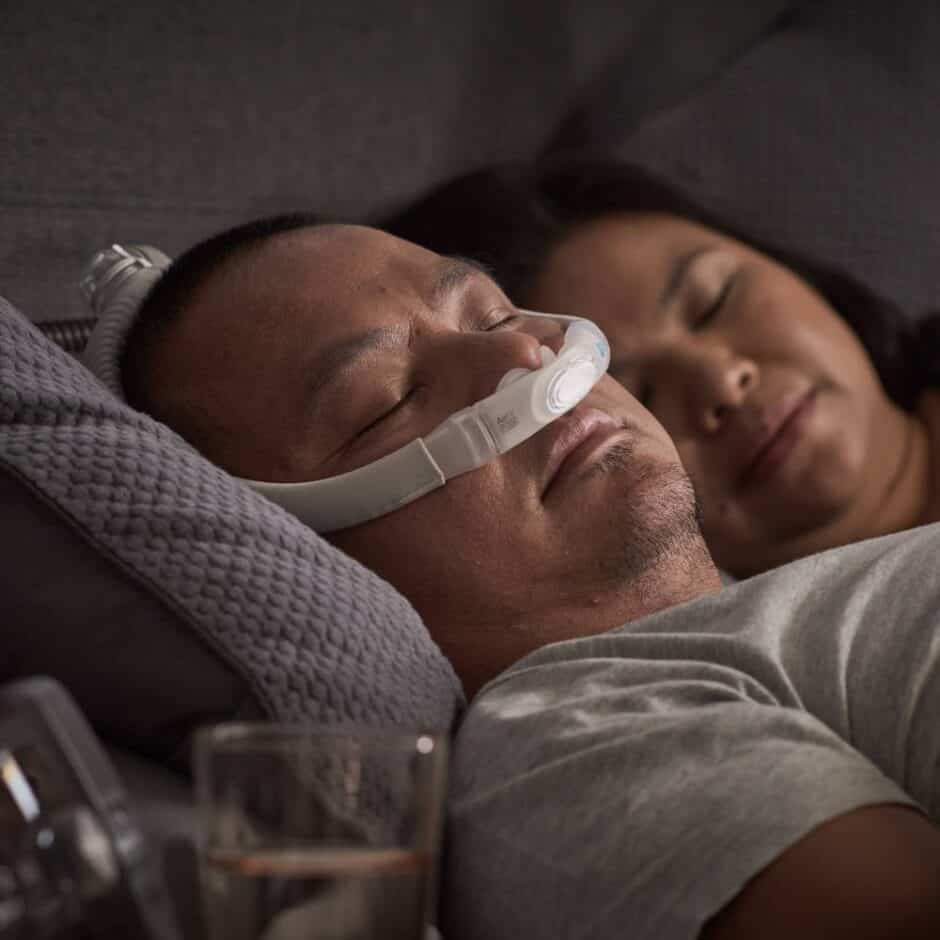
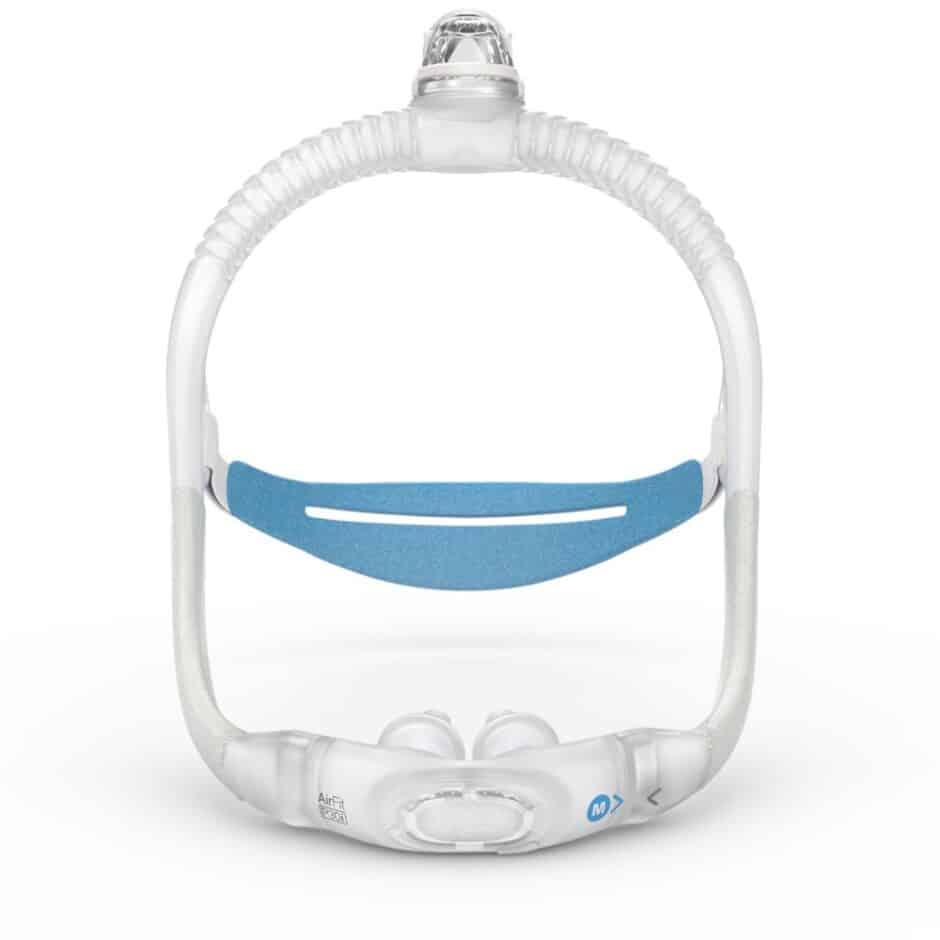
Like the Philips Respironics DreamWear CPAP mask, the ResMed P30i allows you to sleep comfortably in any position with a top-of-head hose connection and soft silicone frame. And like the P10, it is easy to assemble with only three parts. But we’ll get to comparisons in a second 🙂
The accordion-style headgear prevents sliding around. The new QuietAir Vent technology makes using the mask a lot quieter than with the original cushion. And the top-of-head design allows for all kinds of moving around at night.
Key Features:
- Minimal headgear – one strap that sits on the back of your head. Just slip the mask on/off.
- Ribbed silicone frame for stability. Frame available in standard or small.
- Silicone nasal pillows available in S/M/L with a standard frame and S/M with a small frame
- Ultra quiet – the QuietAir woven mesh vent directs air away from you and your bed partner
- Top-of-head connection with quick-release elbow.
Choosing the DreamWear Silicone Nasal Pillows: Pros and Cons
| Pros | Cons |
| Sleep in any position with the top-of-head connection. | Exhalation port does not have a diffuser, and air shoots straight out. This may be disruptive to the bed partner. |
| Soft pliable silicone frame doesn’t dig into the skin and won’t leave red marks. | Nasal pillows do not have any plastic structure/frame, which can feel flimsy to some users. Depending on the individual, this can cause some air leaks. |
| Nasal pillows come in size MW which is not an option for the P10 and P30i. | |
| Nasal pillows come in size MW which is not an option for the P10 and P30i. Frame stays in place well with the updated headgear. The plastic arms that sit above the ears do wonders for keeping the frame from slipping. | |
| You can switch the nasal pillows out for the DreamWear nasal cushions. Nasal cushions are also available in S/M/MW/L. |
Choosing the ResMed P10: Pros and Cons
| Pros | Cons |
| At less than 1.6 oz, the P10 is the lightest nasal pillows mask and second lightest CPAP mask on the market, period. | Traditional front hose connection means no stomach sleeping. |
| Easy to clean, easy to assemble. | Active sleepers may find that the P10 leaks. Less headgear has its downsides, one of which is less stability. |
| Quiet, and exhaled air diffuses away from the bed partner. This is a problem with the DreamWear nasal pillow CPAP mask which does not have a diffuser. | No option to switch nasal pillows to nasal cushions the way you can with the P30i and the DreamWear silicone pillows. |
Choosing the ResMed P30i: Pros and Cons
| Pros | Cons |
| Like with the DreamWear, sleep in any position with the top-of-head connection to the hose. | Nasal pillows are only available in S/M/L – no in-between sizes like the MW which is offered by the DreamWear silicone nasal pillows mask. |
| Flexible silicone frame does not leave markings on your face. | |
| You can switch out P30i nasal pillows for N30i nasal cushions. | |
| Quiet. Exhaled air diffuses away from the bed partner thanks to ResMed’s QuietAir technology. This is a problem with the DreamWear nasal pillow CPAP mask which does not have a diffuser. |
Hope this little guide has helped you decide which mask is best for you. If you wonder how to size your mask properly, we recommend that you consult our Sizing Guide. And if you have any questions, contact us here at RespShop – we’re here to help.

